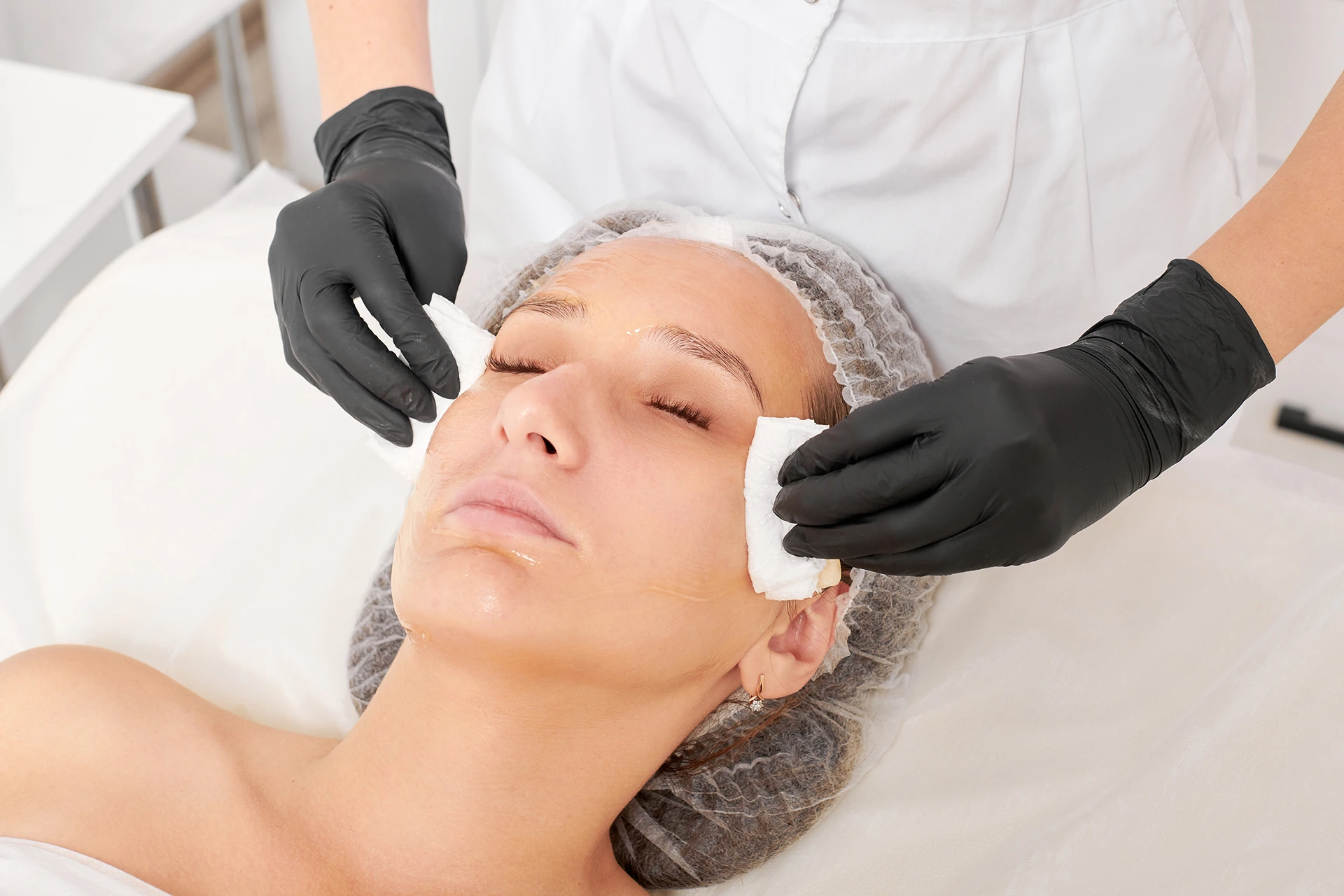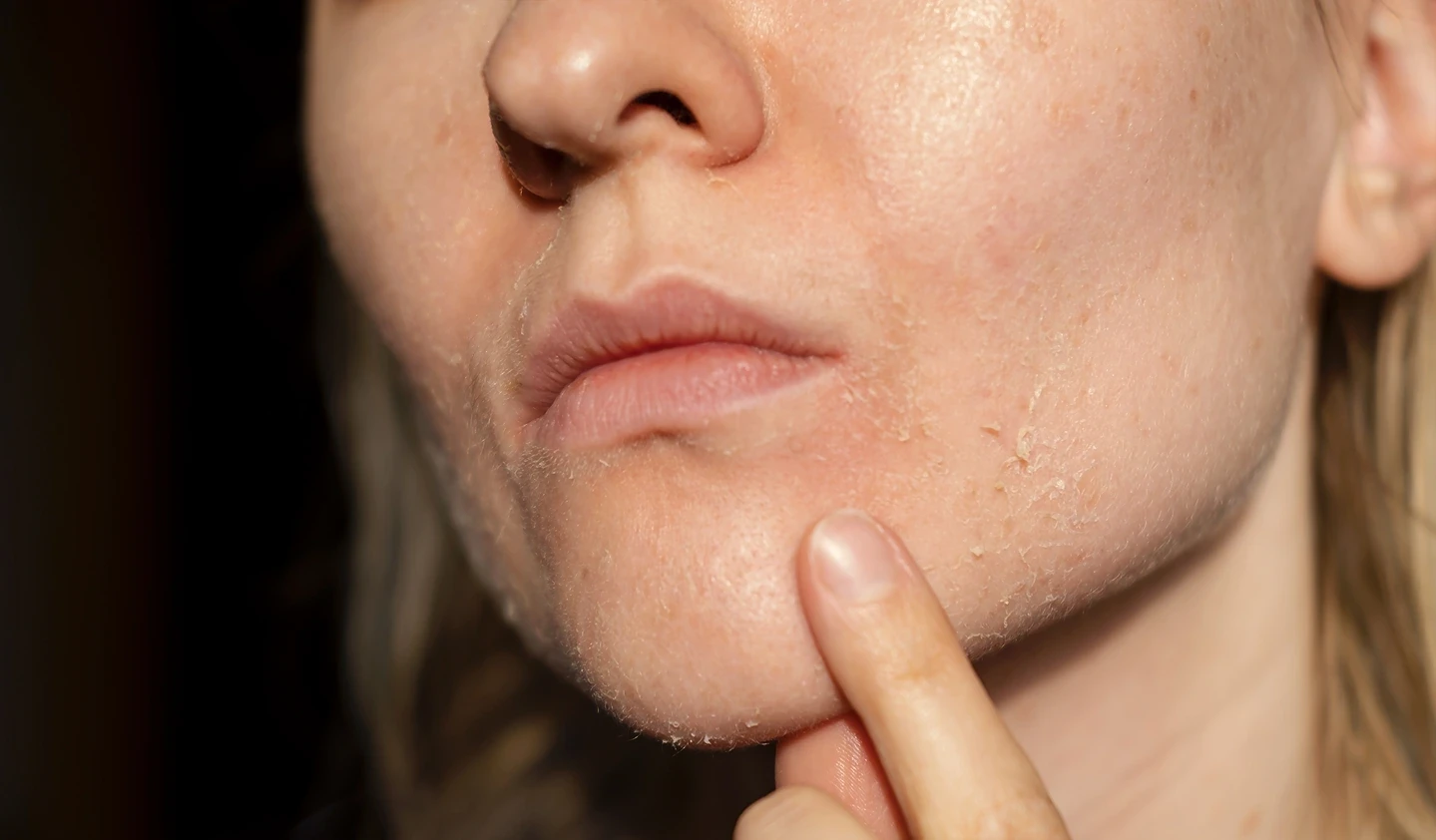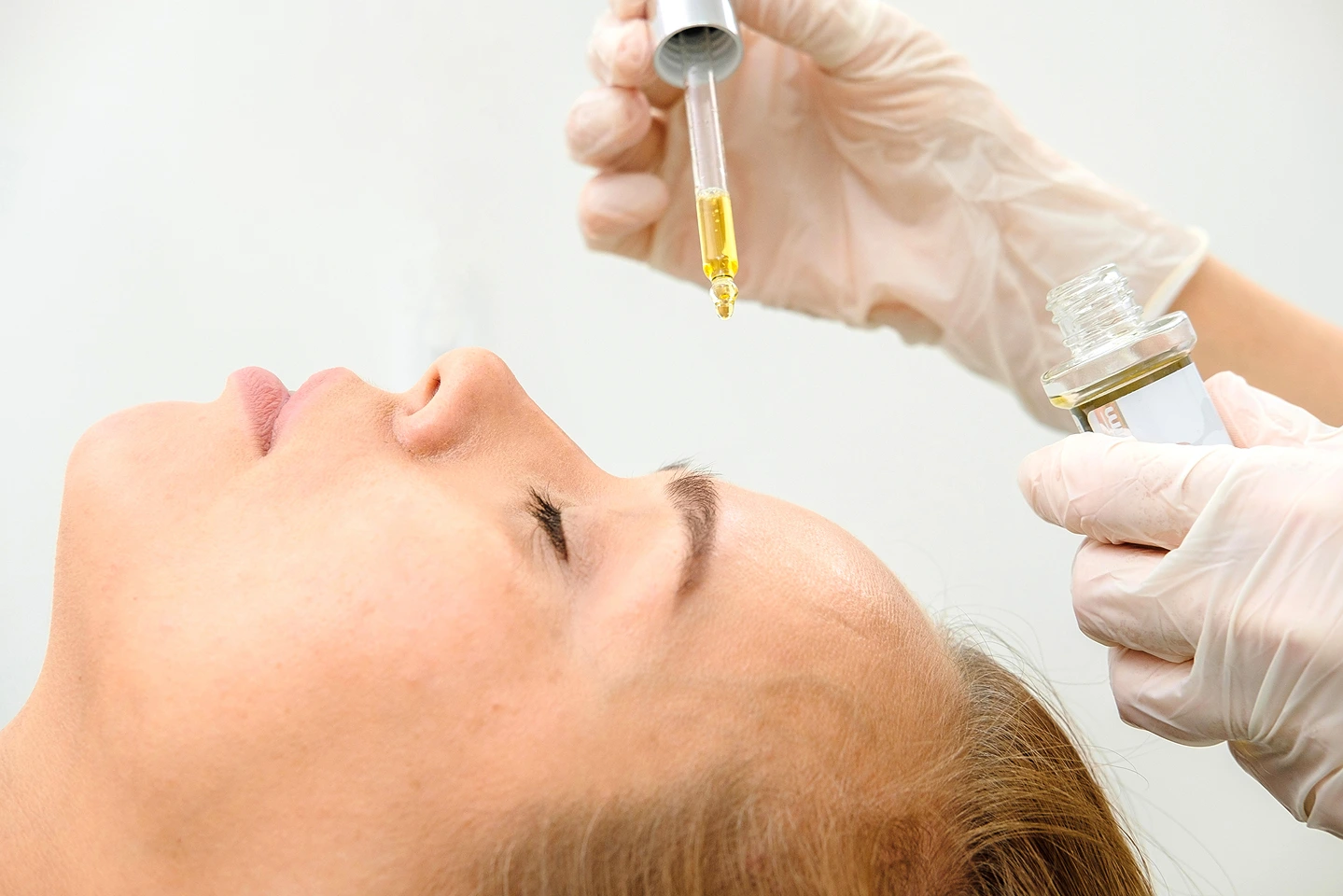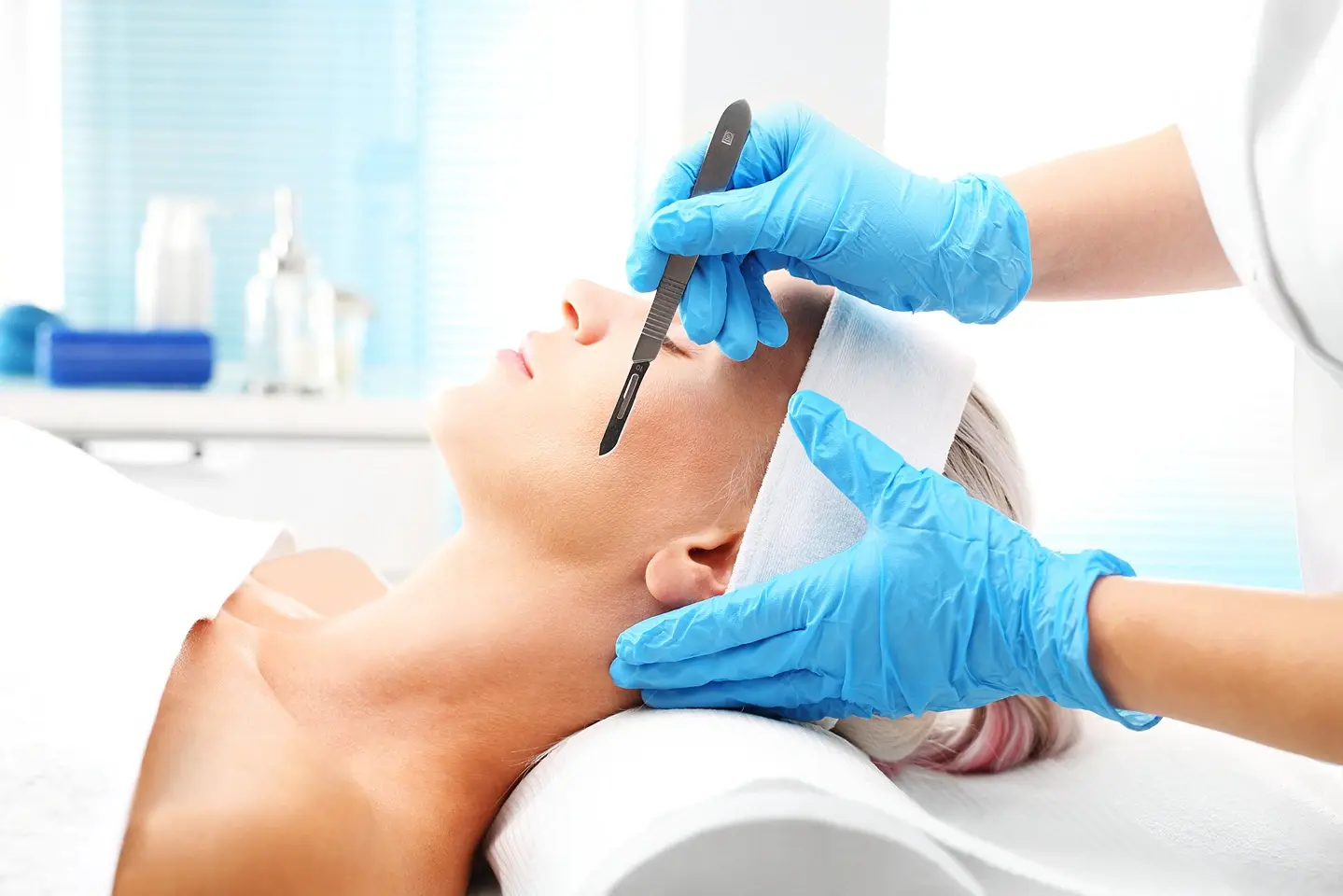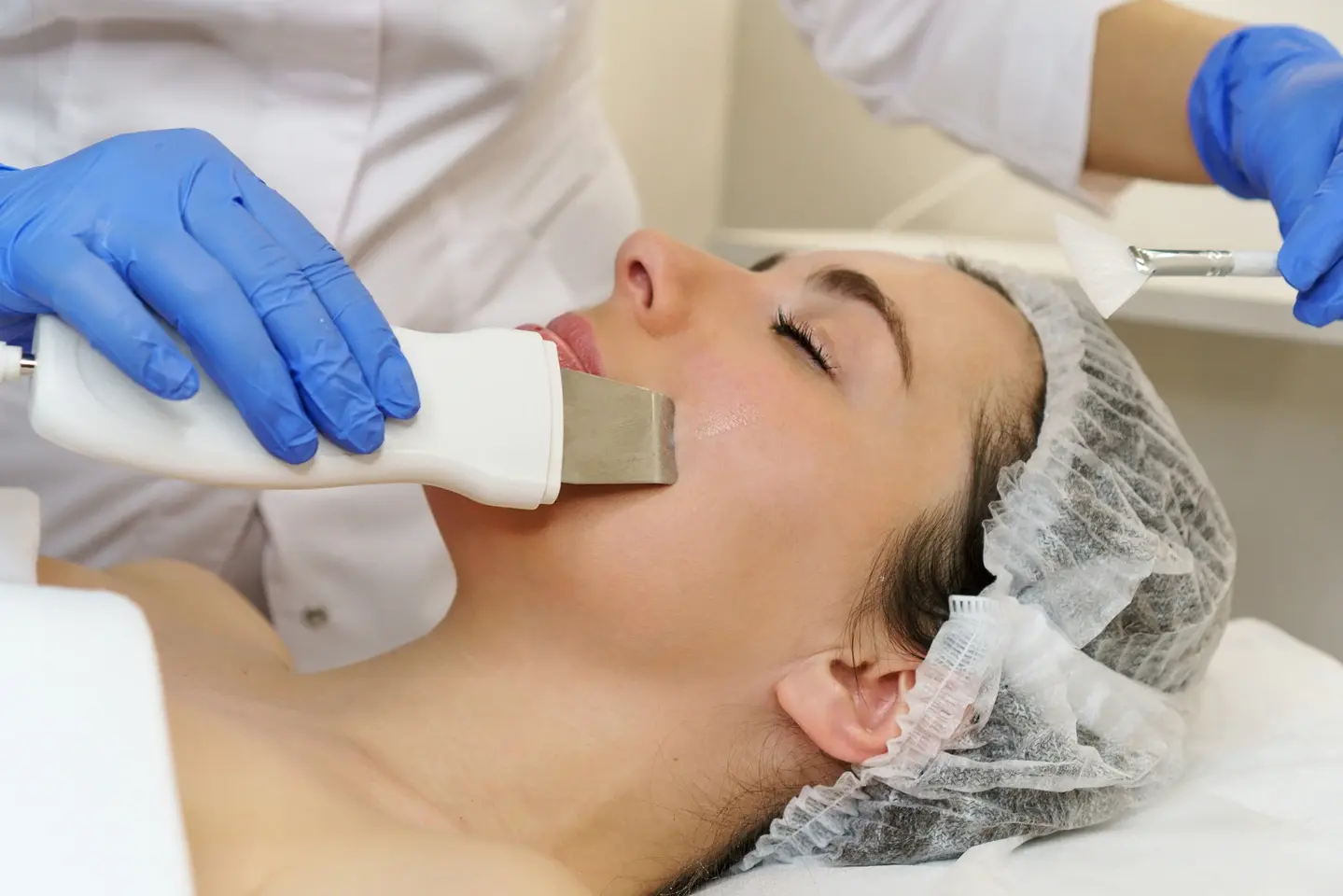Dermaplaning Done Right: The Aftercare Guide for Smooth, Radiant Skin
Dermaplaning is a popular exfoliation technique that has become a staple in many skincare routines. This simple, non-invasive treatment uses a surgical blade to gently scrape away dead skin cells and fine facial peach fuzz, revealing remarkably smooth, glowing skin.
While dermaplaning provides instant rejuvenation, proper aftercare is essential for avoiding irritation and maximizing results. This comprehensive guide will provide you with expert tips on caring for your skin post-dermaplaning. Follow these aftercare steps to achieve radiant, long-lasting outcomes.
Immediate Aftercare: What to Do in the First 24-48 Hours
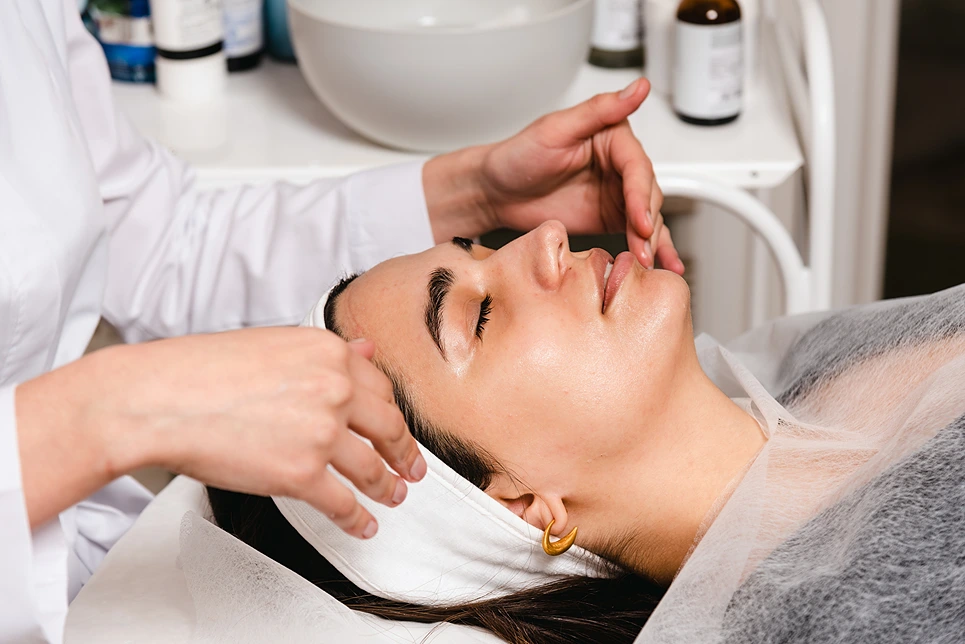
The initial 24-48 hours following your dermaplaning session require careful attention to keep skin calm, comfortable, and protected.
Cleansing
After your treatment, resist the urge to immediately wash your face. Allow the skin to rest and recover for at least four hours before gently cleansing. Use a mild, non-foaming cleanser to avoid stripping the skin of oils. Opt for something soothing and hydrating. Avoid abrasive washcloths – use your hands only.
Moisturizing
Post-dermaplaning skin needs ample moisture, so have your gentlest, most hydrating moisturizer on hand. Look for oil-free, fragrance-free formulas with skin-replenishing ingredients like hyaluronic acid, glycerin, ceramides, aloe vera, and shea butter. Apply morning and night. You may also use a hydrating facial mist throughout the day.
Sun Protection
Your fresh, exfoliated complexion is highly vulnerable to sun damage. Avoid direct sunlight completely and wear broad spectrum SPF 30+ sunscreen whenever you go outside, even if just briefly. Wear wide-brimmed hats and sunglasses as added protection.
The First Week: Do’s and Don’ts
The skin remains sensitive in the days following dermaplaning. Pay close attention to these do’s and don’ts for the first week of healing.
Do’s
- Continue using gentle cleansers, moisturizers, SPF, and hydrating mists/masks.
- Drink lots of water and eat skin-nourishing foods like avocados, berries, leafy greens, and omega-3s.
- Take 400-600 mg of ibuprofen as needed to reduce swelling and tenderness.
- Sleep on your back to avoid irritating the treated side of your face.
Don’ts
- Do not resume use of toners, chemical exfoliants, retinoids, or masks with active ingredients like acids or enzymes.
- Avoid makeup, especially heavy foundation and powder, as well as waterproof mascara, which requires harsh makeup remover.
- Do not pick, peel, pop, or scrub at any dryness or flaking. Let skin renew itself naturally.
- Skip the gym, hot yoga, saunas, steam rooms, and hot tubs, where sweat can irritate skin.
Beyond the First Week: Reintroducing Your Normal Routine
After about a week, your skin should feel less sensitive and ready for your regular products again. Slowly reintroduce your typical skincare routine.
Exfoliation
At the two week mark, you may begin using gentle liquid exfoliants like lactic acid and glycolic acid up to 2-3 times per week. By week three, you can resume daily use of your regular exfoliating treatments if your skin tolerated them well prior to dermaplaning.
Makeup and Heavier Creams
After two weeks, most skin can handle makeup application again. Still opt for mineral makeup and non-comedogenic products. Heavier creams and night treatments like retinol can also be reintroduced slowly at this point.
Advanced Treatments
Wait at least four weeks post-dermaplaning before undergoing chemical peels, microdermabrasion, laser treatments, injectables, and other intensive skincare therapies. Your esthetician will advise you on when your skin is ready again.
Signs of Irritation
If your skin becomes increasingly red, sensitive, itchy, or irritated at any point, discontinue use of any active ingredients and see your dermatologist. You may need antibiotic ointment.
Long-Term Maintenance: How to Keep Your Skin Glowing
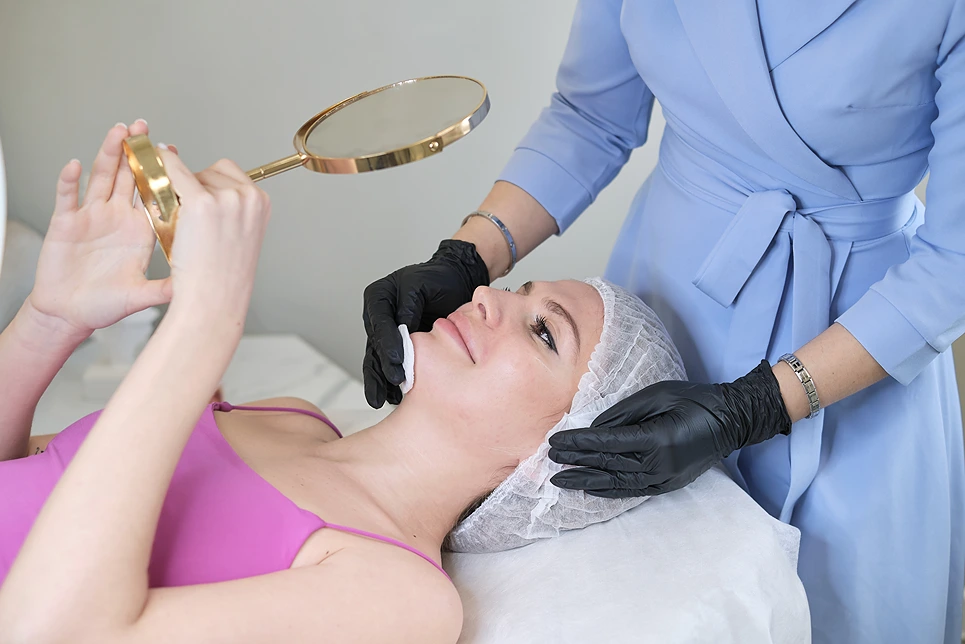
With proper care, dermaplaning results can last for weeks. But you’ll need to take action to keep that smooth, youthful glow.
SPF Is Still Essential
Your skin remains vulnerable to UV damage even after it has fully healed from dermaplaning. Wear SPF 30+ daily to prevent premature aging and skin cancer. Reapply every two hours of sun exposure.
Stick to Gentle Skincare
Now that you’ve erased dry, dead skin and peach fuzz, your products can better penetrate for enhanced absorption. Maximize this benefit by maintaining a gentle skincare routine.
Schedule Next Session
Results last about 4-6 weeks as peach fuzz slowly grows back. For optimal maintenance, schedule follow-up dermaplaning sessions once a month. Your esthetician will advise on the ideal timeline for your individual needs and goals.
Hair Regrowth Myths
One of the biggest misconceptions about dermaplaning is that it causes facial hair to grow back thicker and darker.
This is simply not true. Dermaplaning cuts the hair at the surface of the skin, tapering the end to a fine point, not changing the structure of the hair follicle itself.
Once hair regrows, the blunt end may feel slightly different for a short time, but the thickness and color will remain the same.
Skin Conditions and Precautions
While dermaplaning is generally safe for most skin types, certain skin conditions might make it inadvisable. These include:
- Active acne: Dermaplaning can spread bacteria, which may worsen acne breakouts.
- Rosacea: Exfoliation can aggravate rosacea-prone skin, causing redness and flare-ups.
- Eczema: Dermaplaning may irritate already inflamed skin and hinder the healing process.
- Other skin sensitivities: If you have very sensitive skin or a history of allergic reactions to skincare, proceed with caution.
Important: If you have any of these conditions or other skin concerns, it’s essential to consult a dermatologist before undergoing dermaplaning. A dermatologist can assess your individual needs and determine if and when dermaplaning is right for you.
FAQ: Common Dermaplaning Aftercare Questions Answered
Still have some lingering questions about caring for your skin post-treatment? Here are answers to some frequently asked dermaplaning aftercare questions.
Can I exercise right after dermaplaning?
Avoid strenuous exercise for at least 48 hours. Sweating and increased circulation can irritate the exfoliated skin. Take it easy with light walks and stretching.
Why does my skin feel prickly?
This is normal as the tiny peach fuzz hairs grow back. Exfoliate regularly with chemical exfoliants to keep skin smooth. The prickly sensation means it’s time for your next dermaplaning session!
Can I apply a face mask after dermaplaning?
Yes, hydrating gel masks are safe about 5 days after dermaplaning. Avoid clay, charcoal, and peel-off masks for the first 2 weeks. Read labels carefully and avoid masks with acids.
What if I experience breakouts?
Increased breakouts can happen as a reaction to the thorough exfoliation. Use gentle acne spot treatments and see your dermatologist if you have severe or persistent breakouts, as you may need an antibiotic or anti-inflammatory ointment.
The Takeaway

While dermaplaning instantly reveals fresh, smooth skin, maintaining those results requires diligent aftercare.
Avoid sun, use non-irritating skincare, and gradually ease back into your normal routine. With proper post-treatment care, your skin will stay supple and vibrant until your next dermaplaning session.
Consult your esthetician or dermatologist about your particular needs. Be patient with your skin, and you’ll be rewarded with a glowing complexion that looks years younger.

